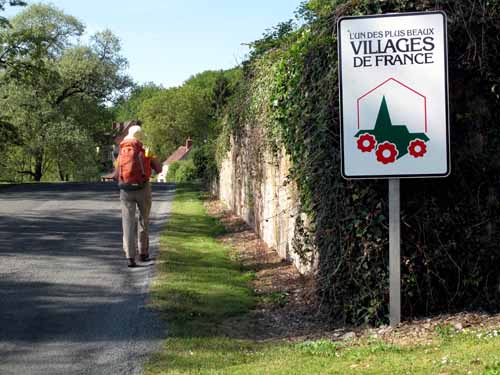With typical French enterprise, the association of “Les Plus Beaux Villages de France” puts a formal value on the rather unquantifiable attributes that attract visitors in such numbers to their country – the beauty of the landscape and the lack of visible development of the villages within it.
The movement began in 1982, when the mayor of Collonges-la-Rouge had the idea of making a sort of beauty contest amongst villages, with the winners getting a special sign to put up on the entry road.
To qualify as “plus beau”, a village must have fewer than 2000 inhabitants, a well-preserved streetscape and at least some ancient monuments – chateaux (ruined or otherwise), old churches, houses, mills, Roman remains, anything. Large numbers of window-boxes and tubs of flowers seem to influence the judges too. The classification “plus beau” is a guarantee of commercial success for the village, since many tourists organise their itineraries around them. There are about 160 of them at the moment, all described in an official handbook.
All over France, villages whose traditional economies were destroyed by the industrial revolution, and which were dying, have now become prosperous again, thanks to the nostalgic appreciation of tourists. This is true even for villages that have not been classified “plus beau”, but It is remarkable how often we have stumbled on a Plus Beau Village in our ramblings across France.
